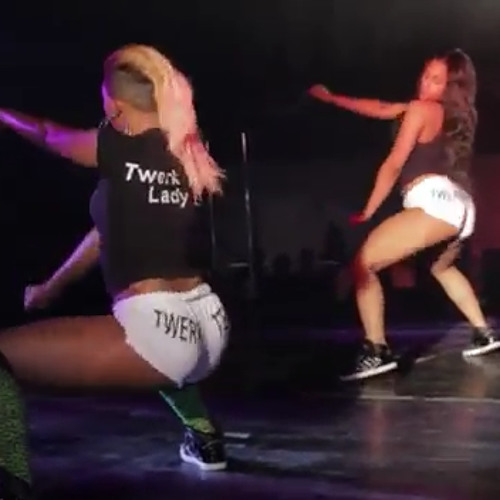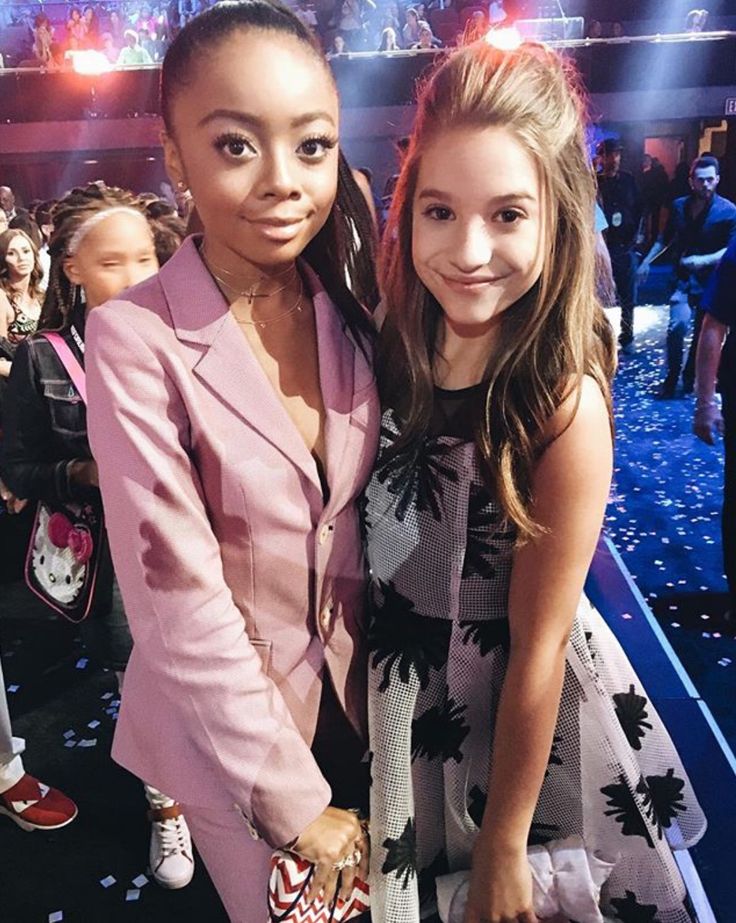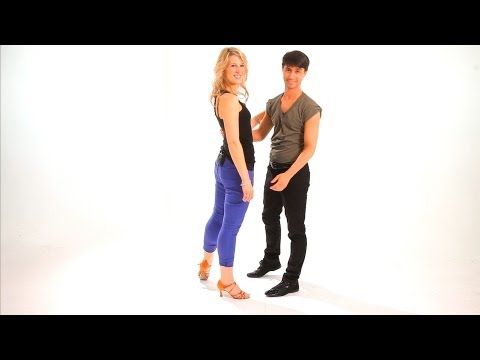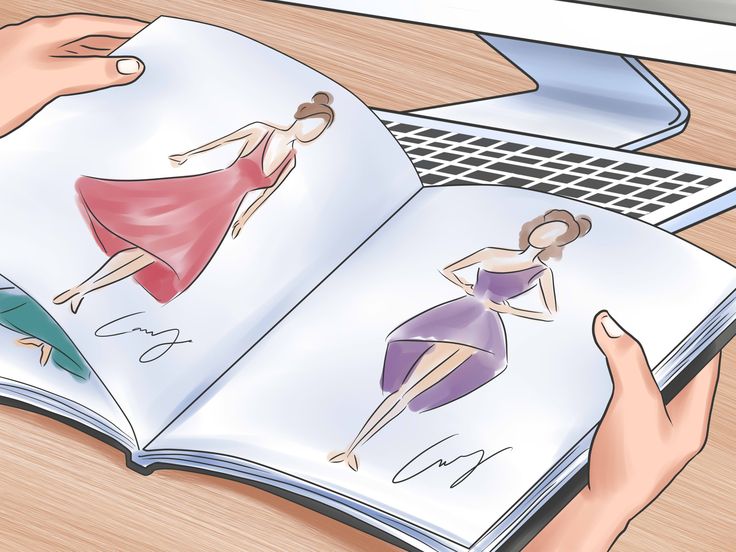How to make your own dance steps
10 Tips From the Pros
Creating movement from scratch to encompass the feeling, rhythm, and theme of a song takes a little imagination and some work, whether you're a beginner or getting ready for a big performance. When you're including the movements and dance phrases for multiple performers, too, choreographing a dance can get quite complicated. That's why we're giving you some top pro tips on how to choreograph a dance when you're feeling stuck, including methods you can use to step outside the box and spice up your routine.
1. Study the Music
If you know what music you want to choreograph your dance to, start studying. Go beyond creating movements based on the rhythm and beat of the song, and study the lyrics, the emotion, and the meaning behind the song. You can find inspiration from the feelings you get when you read the words, and embrace the emotion the artist puts into the song.
Poppin' C, a Swiss popping dancer, says, "The music is everything for me, because the way my body adapts and moves, is because of the way I feel the music. " By knowing every part of your music inside and out, you can design dance moves that really work with the beat and lyrics.
B-boy Junior holds a breaking workshop at Red Bull BC One Camp in Mumbai
© Ali Bharmal / Red Bull Content Pool
2. Watch the Pros
Take some time to watch dance-heavy musicals, like "Chicago" and "Anything Goes," competitive series like "World of Dance," and even street performers, like Logistx, to grab some inspiration for your moves. Observe the styles, transitions, and combinations of movements and note how pro dancers create a physical connection to the music. This can help motivate you to create dances that get the audience to connect with your physical interpretations of the music.
3. Plan for Audience and Venue
Think about who your performance or event is for. Consider the venue you're performing at, too, because your dance environment can help you find ways to creatively express emotion. Lighting, sound, and the overall ambiance of your venue can help you design dances that incorporate mood and emotion to connect with the audience during your performance.
4. Think About Dance Style
Choreograph with steps and dance moves that reflect a specific style. You might try incorporating hip hop steps into a classical dance to mix it up and create your own unique dance style, for example. If you're just starting out with dance choreography, try focusing on learning how to balance a specific style of dance with your unique interpretation of the music you're dancing to.
Kid David poses for a portrait at Red Bull Dance Your Style USA Finals
© Carlo Cruz/Red Bull Content Pool
5. Focus on the Basic Elements
Focus on one (or several) of the most basic elements of dance: shape, form, space, time, and energy. For form, you can focus on designing phrases and steps based on a specific form from nature, like an animal or landform. Use your stage space to showcase explosive energy and give certain aspects of your performance a punch of emotion that keeps your audience engaged.
6. Don't Start at the Beginning
If you're stuck trying to figure out how to start your dance, plan it out from the middle or from the end. Tell a story through your dance choreography and plan out the climatic elements before the small steps to help you flesh out where you want to go with your ideas. Once you've outlined the basic structure of your choreography, piece it together into an entire work.
Tell a story through your dance choreography and plan out the climatic elements before the small steps to help you flesh out where you want to go with your ideas. Once you've outlined the basic structure of your choreography, piece it together into an entire work.
7. Try Choreographing Without Music
Dance in silence. It might seem like a crazy idea since you're choreographing the dance to a specific song. However, just letting your body move and flow with different tunes you imagine can help you step outside your comfort zone and incorporate challenging moves and dance steps that you might not have thought to pair with a song or score. When you discover something you like, pair it with other steps you've already developed and start fitting your moves to the music.
Poppin C shows off his moves during a photoshoot in Lausanne
© Torvioll Jashari / Red Bull Content Pool
8. Embrace Post-Modernism
Study early modern dance forms and styles that can get your imagination flowing. Dancers from the mid-century modern era through the 1950s and '60s (such as Anna Halprin, one of post-modern dance's pioneers) would incorporate a whole world of nontraditional moves in their choreography. Slow walking, vocals, and even common gestures can make imaginative additions to your overall work.
Dancers from the mid-century modern era through the 1950s and '60s (such as Anna Halprin, one of post-modern dance's pioneers) would incorporate a whole world of nontraditional moves in their choreography. Slow walking, vocals, and even common gestures can make imaginative additions to your overall work.
9. Incorporate the Classics
Use classical ballet, traditional ballroom steps, or other classic dance moves to mix up your style. It can be a startling transition for an audience to see a classical ballet step snapped in between freestyle phrases. Combining classical techniques with your dance design can add interest and suspense to your performances.
10. Use Other Art Forms as Inspiration
Don't just focus on music and dance. Look at all kinds of art forms, from two-dimensional paintings to live art performances. Take note of the different emotions and use of space, shapes, and forms that different artworks incorporate, and think about your interpretations and how you can convey that in movement.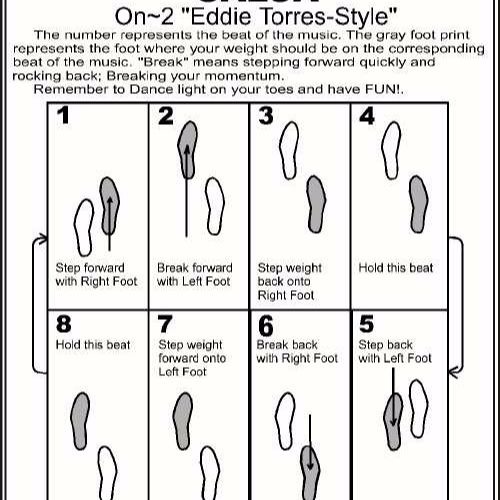 Use this as fuel for your inspiration when choreographing short phrases. Keep up to date on new forms of art to get inspired and avoid the dreaded writer's block (for dancers).
Use this as fuel for your inspiration when choreographing short phrases. Keep up to date on new forms of art to get inspired and avoid the dreaded writer's block (for dancers).
More Pro Tips to Choreograph a Dance
Arlene Phillips CBE, a British choreographer and theater director, got her start pro dancing and choreographing in the 1970s. She's been the choreographer for a variety of performances over the years, including live theater. Her advice for aspiring dancers includes some helpful choreographing tips:
Tell the music's story through your movements
Keep practicing with imaginative steps
Be determined to learn from your mistakes
Challenge yourself with unique rhythms, styles, and techniques
Plan out your most impactful elements then work in additional steps around those
Keep practicing your choreographing techniques
Don't be afraid to learn something new
One of the most important things to keep in mind when choreographing a dance, though, is to embrace diversity.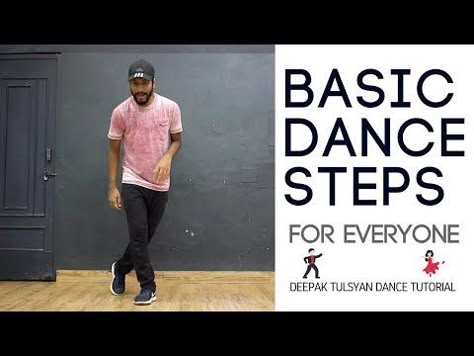 Don't be afraid to do something different or outside the norm. Try incorporating new styles or steps to make your dance fresh, and study all types of art to get excited about your work. The more you challenge yourself to think outside the box, the more creative and unique you can be with your choreography.
Don't be afraid to do something different or outside the norm. Try incorporating new styles or steps to make your dance fresh, and study all types of art to get excited about your work. The more you challenge yourself to think outside the box, the more creative and unique you can be with your choreography.
How To Choreograph A Dance Routine In 6 Simple Steps
Are you wondering how to choreograph a dance routine? Or if you even can???
The answer is YES, YOU CAN! And you totally should.
Choreographing isn't just for professional dancers with tons of clout. It's a skill that anyone can learn with a little practice and inspiration. Not sure how to start? Just follow this handy 6-step guide and start creating!
Finding the right song could be the easiest or hardest part of choreographing.
Sometimes, you hear a song for the first time and you know, you just KNOW, that it's the one.
Other times, you browse through your entire iTunes library, SoundCloud dashboard, Spotify playlists, and still don't feel anything.
But once you have a song and pick out the section you want to choreograph to, listen to it...A LOT. And don’t just listen – listen with intent.
Look up the lyrics to see how you relate to the meaning of the song. Discover hidden hi-hats and riffs that you can highlight.
Note the "pathways" for movement you want to take – do you want to hit a certain lyric? Or that dope double bass? Visualize ideas as you listen.
You don't need to come up with concrete moves, but understand how you wanna move. And if you need to cut your music, do that first.
Having to wait or skip around to different parts of the song can interrupt the process.
Some tips for finding songs: Best Ways For Dancers To Find New Music
Yes, you can watch videos from your favorite choreographers and remix their routines, but to make something unique to you, try drawing inspiration from your own life and the culture around you.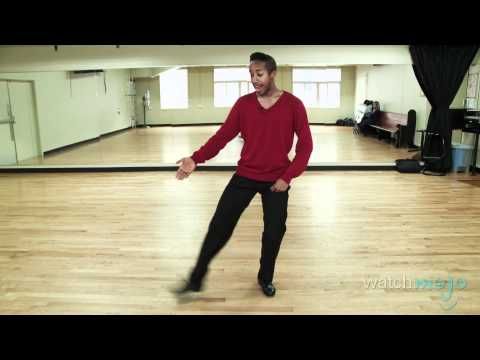
Read thought-provoking books, watch beautifully shot movies, check out MET Gala costumes, and visit cool museums!
All forms of art can inspire and fuel your art. When you see something inspiring, write it down so you can come back to those ideas later.
Even something simple like an interesting conversation with a friend can turn into a dance choreography idea or a new dance move.
Already feeling inspired? Watch this video to learn how to turn those ideas and concepts into dance moves!
Freestyling doesn’t necessarily mean that you’re going to be using those exact moves in your piece. In fact, you probably won’t even remember a lot of what you did!
The point is to let your body respond to the music. Play the whole song and let yourself move. Notice how you naturally groove to certain sounds.
This will be the first "layer" in your choreography. You can then try variations or build more intricate movements on top of it.
You can then try variations or build more intricate movements on top of it.
Not sure how to start freestyling? Read this article for a few more tips: How to Freestyle Dance
And if you put on a song you really love, but still can't come up with any moves, check out this video!
Clay gives you tips for creating unique movements, even when you think you have choreo block.
You probably decided to choreograph to the song because you thought certain sections would look dope on the body.
Is it a climax? A breakdown? An instrumental interlude?
Whatever it is, start with that part. You don’t have to choreograph chronologically from beginning to end.
Start with the chunks that come easier, then build the rest of the choreography around it.
After you've choreographed your favorite chunks, make sure to give some love to those in-between sections!
Just because it’s not a crazy beat combo doesn’t mean it doesn’t have potential to look amazing.
Sometimes it’s those slower moments that are the most memorable. Check out this piece from Galen – it's all about her presence and demeanor.
Even her simple movements are engaging because she's filling those calmer moments with presence, before she goes off in a powerful combo.
A lot of us have the problem of making choreography that looks good in our heads... But not on our bodies. At that point, you just gotta train yourself.
Some refer to this as “cleaning” or “setting,” which involves perfecting certain pictures you make with your body, looking at pathways between points, or drilling quick combinations.
Check out this article to learn more about the cleaning process: How To Execute Choreography Better By Utilizing Your Body With Carlo Darang (Choreo Cookies)
And remember: How you choreograph will be how the piece looks.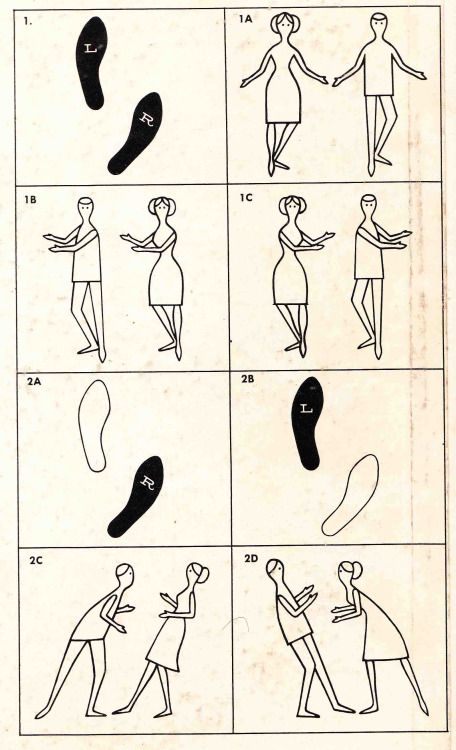 So when you choreograph a dance, do the moves full out.
So when you choreograph a dance, do the moves full out.
For example, if you want a plié somewhere, really bend those knees. Let body rolls go all the way through your body. If you’re doing floorwork – get on the floor!
It's not going to magically look amazing when you perform on stage or in front of the camera. Make it amazing as you're making it.
Watch this video to learn more about dancing full-out, in every moment.
There are probably moments within your piece that feel perfect to you. Don’t change those.
But the piece as a whole is probably a bit rough around the edges, especially if this is your first time choreographing.
As novelist Ernest Hemingway once said, “The first draft of anything is sh*t.”
So don’t worry if it’s not exactly what you wanted it to be. You can work your way there!
Do this by trying out variations of movements, scrapping some sections, changing directions, or adding floorwork – whatever you feel is necessary to “edit” the piece.
And honestly? That’s what makes creating so fun – trying things. Saying “Nope, not that,” or “YES oh my god, it worked!”
It’s supposed to take multiple drafts! Just keep editing until you’re done.
Of course, if you're a perfectionist, you might feel like your piece is never finished, but you gotta draw the line at some point.
While it’s awesome to try to keep improving your piece, there comes a point where you have to say “This is it. It's ready."
It's not about feeling like your piece is perfect. It's about making something that you feel proud to say you made. So when you're done, let it be.
Give yourself a pat on the back. Record the piece and share it with us via our STEEZY Studio members Facebook Group!
Thousands of dancers around the world are not only improving their dance skills on STEEZY Studio... they're joining our community and getting feedback from other dancers!
Click here to sign up for STEEZY ;)
Check out this video for a quick recap of this guide AND a few extra tips!
App Store: Birthday Dance Video Maker
Description
Choose your favorite birthday theme, put your face in the hole and turn yourself into a dancing star. Create funny videos with your face in!
Download now and turn yourself into a 3D animated dancer. It will help you to become a star in personalized birthday video with your face. Choose the best theme and get ready to celebrate your birthday! Create a 3D model of your face and place it on the dancers. Choose between different original backgrounds, clothes and accessories. Create your own video, record your own dance and share it. Add your own dance moves to your birthday celebrations.
DANCER SETUP
Create your own personal dancer video! From head to toe, change whatever you want from your character. Create the perfect look for your character to show off better. Try different clothes, accessories and skin colors. When you're ready, the stage is yours.
Genuine
THEMES From superheroes to fictional movie and TV character shows, you can find a fun dance theme that suits your celebration. Discover the funniest birthday celebration costumes of superheroes such as, zombies, pirates, aliens and more. If you want more you can dress up as a mariachi, astronaut or wizard to have a magical birthday party.
DIFFERENT STAGES DIFFERENT SONGS
Choose the background where you would like to perform and wait for the surprise song that comes with it. Wink show time now We have packed the app with the best dance stages and songs.
DANCE with friends
We offer you different options to show your moves. All you need to do is choose the theme you like and put your face in 3D in these fun animations. Dance alone or dance with a friend. Create video and share it with in social media. They will love the video. Come and just dance with us!
SHARE ON SOCIAL MEDIA
Save dance videos and share on social media. Enjoy your birthday celebration with family or friends!
Developer Bonifacio Melero has indicated that, in accordance with the app's privacy policy, data may be processed as described below. Detailed information is available in the developer's privacy policy.
Detailed information is available in the developer's privacy policy.
Data used to track information
The following data may be used to track user information on apps and websites owned by other companies:
- Identifiers
- Usage Data
Unrelated with user data
The following data may be collected, which is not related to the user's identity:
- Identifiers
- Usage Data
Sensitive data may be used differently depending on your age, features involved, or other factors. Read more
Read more
Information
- Provider
- Bonifacio Melero
- Size
- 332 MB
- Category
- Entertainment
- Age
- 4+
- Copyright
- © Bonifacio Melero
- Price
- Free
- Developer site
- Application Support
- Privacy Policy
Other apps from this developer
You may like
teaching basic movements and features of dance
Contents
Hip-hop, like any other dance direction, is best studied at a professional school.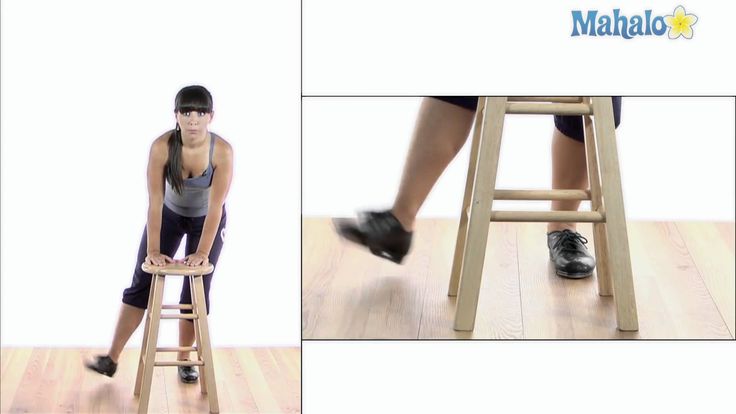 After all, only a qualified teacher will find an individual approach to a new student and teach the necessary movements. But if this is not possible, or if you want to come to class prepared, you can try to master the direction of hip-hop at home. How to dance the first movements, now we will tell.
After all, only a qualified teacher will find an individual approach to a new student and teach the necessary movements. But if this is not possible, or if you want to come to class prepared, you can try to master the direction of hip-hop at home. How to dance the first movements, now we will tell.
Like any dance, hip-hop training includes getting acquainted not only with the basic movements of the style, but also with a certain philosophy. And in this direction it is special. Hip-hop came to us in the second half of the last century from the most disadvantaged areas of New York and Los Angeles. Tired of injustice, aggression and blood, teenagers, who mostly did not have the cleanest reputation, invented their own special way to resolve conflicts - with the help of dance battles and rap parties. Hip-hop is a free dance, a challenge to society and a protest against any inequality. That is why the main thing in this style is not at all the clarity of the learned movements, but the sense of rhythm, improvisation and expression of the individuality of the performer.
Getting Started: Preparation and Basic Movements
Before learning hip-hop for beginners, you should make sure that you feel comfortable while practicing. According to experienced dancers, there are three things that will help you relax and start learning:
- Appropriate environment: flat floor, spacious room, full-length mirror.
- Loose clothing and comfortable shoes. Nothing should hinder movement.
- Hip-hop rhythmic music.
A little ritual will help you tune yourself into the wave of hip-hop: stand with your legs apart, put your hands down and close your eyes. Listen carefully to the sound of the music and try to learn to hear the beat. Rock to the beat. And now you have already mastered the first movement. Congratulations! It's time to move on to more complex elements.
The basic movements of hip-hop are swing and step. You are already familiar with the first one. Now try to put your right foot to the side and stretch your right hand up. Bend your right leg, transferring your body weight to it, and lower your arm to shoulder level. Turn the body to the left, bend the left leg, and put the right leg on the toe. Now lower your right knee, arch your back and reach your hands to the floor. When you manage to complete this combination, consider yourself a good start in hip-hop.
Bend your right leg, transferring your body weight to it, and lower your arm to shoulder level. Turn the body to the left, bend the left leg, and put the right leg on the toe. Now lower your right knee, arch your back and reach your hands to the floor. When you manage to complete this combination, consider yourself a good start in hip-hop.
Sign up for a trial lesson
Here are some more basic hip-hop moves for beginners:
- Starting position - standing, feet shoulder-width apart, and arms along the body. We squeeze the brushes into a fist and alternately bring forward one hand, then the other. Then we connect the legs bent at the knee: left hand - right leg, right leg - left hand.
- Starting position - standing. We jump in place and cross our legs, and bend our arms as if we were rowing.
- Starting position - standing, feet slightly wider than shoulders. We put the right leg a little back, bend the legs at the knees, which at the same time look straight.
 With the right hand we cover the face, with the left, folded into a fist, we put it in the region of the heart. Then at the same time we tilt our head to the right and unclench the left hand, and after that we turn the right knee and right hand to the right.
With the right hand we cover the face, with the left, folded into a fist, we put it in the region of the heart. Then at the same time we tilt our head to the right and unclench the left hand, and after that we turn the right knee and right hand to the right. - Starting position - standing, feet firmly pressed to the floor, knees slightly bent. We put the spread fingers of the right hand on the chest, keep the elbow parallel to the floor. We bend in an arc, as if we received a blow right in the heart. Then we make two turns in different directions, straighten our back and return to the starting position. The hand at this time falls from the heart to the waist. At the end, we throw the pelvis forward again, round the back and tighten the buttocks.
You can achieve the first results quite quickly. But when you start to study closely how to dance hip hop, you will soon notice that there are no clear movements and rules in this direction. Having mastered a few basic elements, the dancers begin to improvise, create their own combinations and dance as creative fantasy suggests.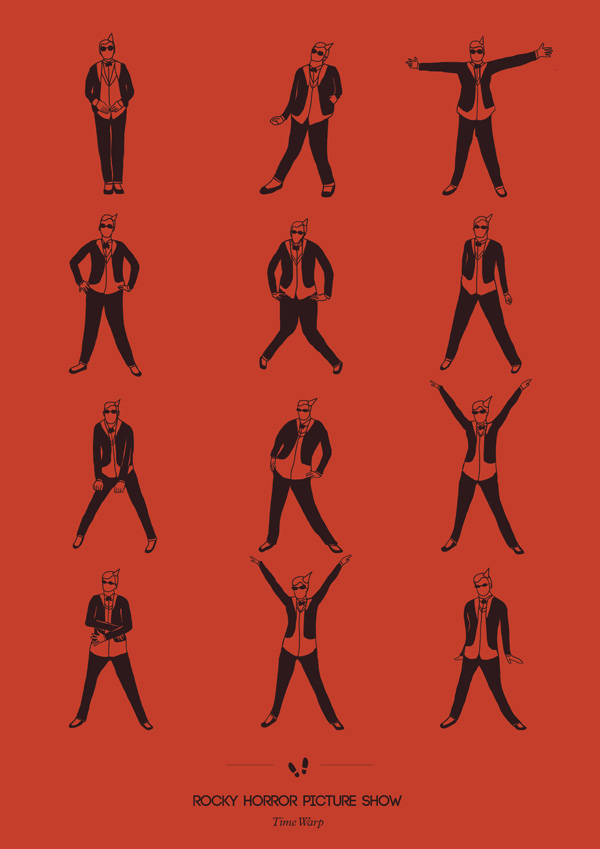
How to continue: choosing a style
If you have mastered the first movements of hip-hop from videos and photos on the Internet, it's time to choose the direction in which you will develop further. Hip-hop culture is a wide range of dance styles that differ from each other both in elements and in general mood. The main ones are:
- Breakdance is still popular basic style of hip-hop, on which the direction originated.
- Popping - rhythmic contraction of various muscle groups to the music so that it looks like jolts on the performer's body;
- Wave - smooth and plastic movements of the body, the most famous of which is the wave with hands;
- Afro-jazz - shaking mainly the lower and most prominent part of the body in women;
- Crump - vigorous shaking of various limbs to the music so that it seems as if someone has moved into the dancer;
- New Style, also known as freestyle, is an improvisational dance that combines not only hip-hop movements, but also elements borrowed from more than a dozen other dance styles.
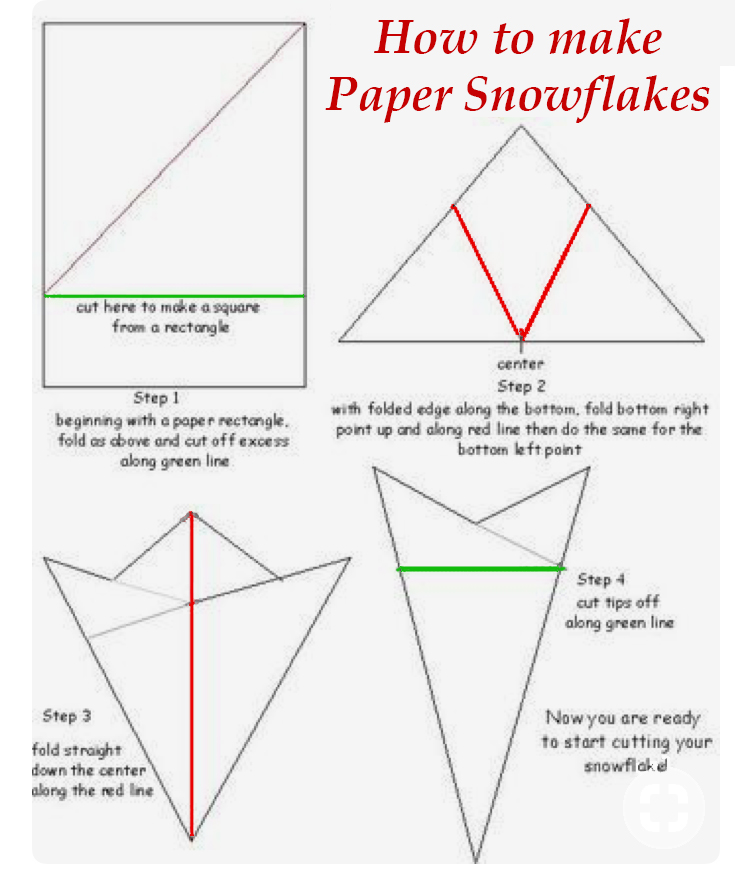
- La Style - Hip-hop, where the emphasis is on entertainment, so this style is used mainly in videos and when staging shows.
- Ragga jazz is a dance tuned to the music: the performer's legs work under the drums, and the hands become active during the recitative.
- Locking - an energetic dance with "locks" - freezing in different positions for a few seconds or periodically slowing down the movement.
- Power move - a spectacular style that includes complex acrobatic elements, handstands, various twists, and transitions.
- C-walk is a “language” dance with a criminal past that emphasizes intense and very dynamic footwork.
Women's and men's hip-hop
The next step in how to learn hip-hop without leaving home is to bring a little femininity or, conversely, brutality into your existing skills - depending on your gender accessories. The thing is that female and male hip-hop are somewhat different from each other, and, therefore, representatives of the beautiful and strong half are trained in this direction in different ways.
Hip-hop dancing for beginner girls is based on plasticity, flexibility and unobtrusive sexuality. Girls wear baggy sweatpants and hoodies on a par with men, perform sweeping movements, but their execution looks different: hips, legs and shoulders are more involved, the elements are a little smoother and sexier.
Male hip-hop, on the contrary, is more daring, energetic and sometimes even aggressive. The focus is on the work of the arms and body, acrobatic elements and movements that require strength and male endurance.
If you prefer to learn this difficult direction from videos, it is better to initially choose hip hop training, where the movements will be performed by a dancer of your gender. Together with the right technique, you will be able to capture the gender characteristics of the choreographic elements.
A few more secrets
Learning to dance hip-hop at home, without classes with a professional teacher, is not easy, but real. Especially if you add training with a few more components. Here, as in learning a foreign language, only complete immersion in the culture will help. So, here are some tips from “experienced” hiphopers who have mastered a lot not under the guidance of a qualified mentor, but at home by the mirror:
Especially if you add training with a few more components. Here, as in learning a foreign language, only complete immersion in the culture will help. So, here are some tips from “experienced” hiphopers who have mastered a lot not under the guidance of a qualified mentor, but at home by the mirror:
- Videos with basic exercises will help you master some of the moves, but for additional skills, it is better to turn to online courses. Hip-hop lessons for beginners are regularly held online, often live.
- Hiphop parties and get-togethers will help you melt into this culture and make new acquaintances. Yes, of course, everyone will laugh at your first dances, but no one drags you to the center of the circle. While you're learning, watch the pros dance, adopt a style, and memorize some moves to practice at home.
- Clear training regimen. Only with regular practice can you achieve results. In addition, our body is set to a certain schedule, and if you exercise at a certain time, it will prepare for stress.
 As experienced dancers note, the optimal duration of even home workouts is two hours. This is enough for warming up, and for the lesson itself, and for stretching after.
As experienced dancers note, the optimal duration of even home workouts is two hours. This is enough for warming up, and for the lesson itself, and for stretching after. - Additional physical activities. If you are in the mood not just for basic hip-hop movements, but for serious hip-hop elements with tricks, strengthening the muscles of the whole body is indispensable. You will need strong arms, strong core muscles, and no extra weight. This can be achieved by exercising in the gym or additional weight training at home.
- Compliance with safety regulations. Be sure to dance in comfortable non-slip shoes and loose clothing. Do not start training without a proper warm-up, and when practicing acrobatic elements, lay something soft on the floor.
Video tutorials will be enough to learn how to dance hip-hop. But to become a real dancer, you need to study the subculture from the inside. It is believed that a hiphoper has achieved true mastery when he is in perfect control of his body, does not “slow down” on the dance floor, knows how to improvise and select universal movements for any music.


